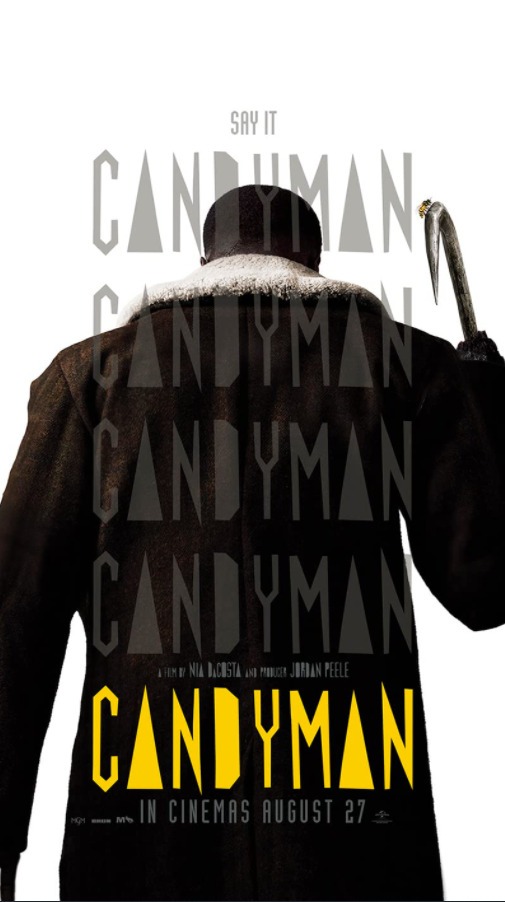“Candyman” sequel discusses racial injustice through horror
3 min read
The sequel to the original “Candyman” talks about racial injustice. Metro-Goldwyn-Mayer Pictures Inc. and BRON Creative MG1, LLC. / IMDB.com
by KEVIN REILLY
Staff Writer
The movie “Candyman” recently made a comeback as a sequel and modern twist on the classic 1992 horror film with the same name. While this film may be more appealing to an audience that remembers the original, younger audiences can also benefit from watching it. Directed by Nia DaCosta and written and produced by Jordan Peele, this new installation of “Candyman” addresses issues of racial injustice and police brutality.
The main character, Anthony McCoy, played by Yahya Abdul-Mateen II, is an artist who bases his work on the history of Candyman after learning about his story and becoming obsessed with it. Back in the 19th century, Candyman, whose very origins are ingrained in racial injustice, was killed by a lynch mob after being found having an affair with a white woman. His death resulted in a curse involving his name; if someone looks in a mirror and says “Candyman” five times, Candyman is said to appear and kill that person. In the present day, McCoy creates an exhibit for an art show that mirrors the legend of Candyman and the racial injustice surrounding his death. McCoy’s piece, interestingly enough, set the wheels in motion for Candyman to appear.
A majority of the movie plays out like one would expect from the horror genre, with Candyman, the slasher, appearing when a character chants his name in a mirror. Gradually, McCoy’s life draws in more parallels and becomes more connected with the life of Candyman. Because Candyman was killed by bees, McCoy gets a bee sting on his hand that becomes more severe over time.
However, while many of the ideas from the original movie are seen in this sequel, Peele and DaCosta wished for a different approach. In an interview with the L.A. Times, DaCosta said, “The biggest thing for me was the shift in point of view. The first film is very much from an outsider perspective, from a white point of view, and this movie is from the Black perspective and even more specifically from the perspective of Candyman.” While the overall narrative is roughly the same, the theme of racial inequality is much more apparent and hard-hitting this time around, arguably symbolizing the state of the United States and its race relations.
Racial themes are the standing stones for this new iteration of “Candyman,” a standout of films written by Jordan Peele. While these themes are important to not only the overall narrative of “Candyman” but our society as a whole, the film seems to take an abrupt detour toward this at the end of the movie. For nearly the entire first half of the movie, the narrative of racial injustice is evident, yet the focus is on learning about Candyman – the main draw of a film titled “Candyman.” However, while Candyman himself lingers throughout the movie and into the closing, there is a major shift in narrative focus towards the end. This focus is turned toward police brutality, which causes such a jarring shift that it feels like a different movie entirely. Themes like these do have a place in a modern interpretation of “Candyman,” and they are very important to recognize, but the movie would have benefitted from a more smooth and gradual transition into the last section focused on police brutality. While these messages are important to portray in modern films, and they are portrayed well in the first half, I wish that they were implemented better in the ending of this sequel of “Candyman.”











